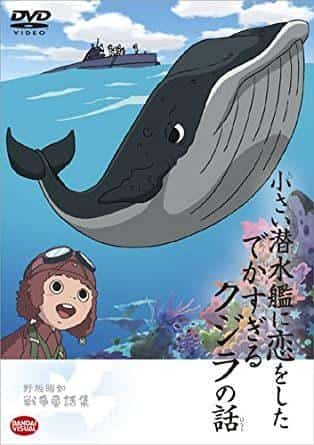Review of "Otoko Ippiki Gaki Taisho": A masterpiece anime depicting the passion of youth and the bonds of friendship

"Otoko Ippiki Gaki Taisho": A legendary anime depicting the youth and masculinity of the Showa era■Overview of the work"Otoko Ippiki Gaki Taisho" is a TV anime series that aired on Nippon Television from 1969 to 1970. It is based on a manga by Hiroshi Motomiya that was serialized in Weekly Shonen Jump and produced by Tokyo Television Animation. It consists of 156 short episodes, each 10 minutes long, and was a popular daily program that aired from Monday to Saturday. This legendary anime, depicting the youth and masculinity of the Showa era, is still loved by many fans today. ■ StoryMankichi Togawa of Saikai Junior High School wins a fight against 180 kids and becomes a bully with 1,000 followers in the Kansai region. He then makes his way to Tokyo, where he encounters business tycoons, rivals, and vicious minions of power. Mankichi grows stronger and strives to take over the world. His manly actions and the bonds he forms with his friends are at the heart of the story. ■Explanation"Otoko Ippiki Gaki Taisho" was a TV anime series based on Hiroshi Motomiya's manga, with a unique format of six episodes aired Monday through Saturday. Tokyo Television Animation, which produced the series, was founded in 1965 by members of Nippon Broadcasting Films, an animation production company exclusive to Nippon Television, and began operations in 1968. The company disbanded in 1971 after producing the film "Yasuji's Pornrama: Yacchae Mae!", but members of the same company later founded Nippon Television Animation, which produced "Doraemon" (the first Nippon Television broadcast series) and other works. The series captured the hearts of boys in the Showa era and is known as a masterpiece depicting manliness and friendship. ■Cast
■ Main staff
■ Main Characters
■Subtitle
■ Appeal and evaluation of the work"Otoko Ippiki Gaki Taisho" is a work that captured the hearts of boys in the Showa era, and its appeal has not faded even today. The main character, Mankichi Togawa, is portrayed as a character full of manliness, and many viewers sympathized with his actions and words. In addition, the bond with his friends and his attitude of facing difficulties were loved by many people as a symbol of youth. The series has been highly praised, especially for its storytelling and the appeal of its characters. Mankichi's coming-of-age story gives courage and hope to viewers, and teaches the importance of friendship and justice. In addition, despite being a short 10-minute episode, it has been praised for its suspenseful development and detailed story structure. ■ Background and influencesThe production of "Otoko Ippiki Gaki Taisho" symbolized the heyday of Tokyo Television Animation. Many of the production staff were leading figures in the anime industry at the time, and their skills and passion are reflected in the work. In particular, the names of directors Tadao Wakabayashi and Yoshiyuki Tomino are familiar to anime fans, and their skills raised the quality of the work. This work had a huge influence on later anime works. In particular, the production techniques, character drawing, and storytelling methods of anime based on boys' manga have been passed down to later works. In addition, as a work depicting the youth of the Showa era, it has become a masterpiece that remains in the hearts of many people. ■ Recommendations and related worksIf you enjoyed "Otoko Ippiki Gaki Taisho", we also recommend the following works. These works are also known as masterpieces depicting the youth and masculinity of the Showa era.
These works, like "Otoko Ippiki Gaki Taisho", are masterpieces that captured the hearts of boys in the Showa era, and are stories that give courage and hope to viewers. Please watch these works to feel the youth and masculinity of the Showa era. Conclusion"Otoko Ippiki Gaki Taisho" is a legendary anime that depicts the youth and masculinity of the Showa era, and its charm is still loved by many people today. The story of the protagonist Togawa Mankichi's growth, his bond with his friends, and his attitude towards facing difficulties give courage and hope to viewers. This work had a major influence on later anime works, and will forever be remembered as a masterpiece that symbolizes the youth of the Showa era. Please watch this work and feel the youth and masculinity of the Showa era. |
<<: Pinch and Punch: A look at the suspenseful story and characters
>>: Star of the Giants vs. Astro Boy: A thorough review of the showdown between these anime classics
Recommend
The appeal and reviews of "PRISM ARK": A fusion of fantasy and battle
"PRISM ARK" - In pursuit of the brillia...
"Transformers: Origins" Chinese poster will be screened for a limited time during the Mid-Autumn Festival
Recently, the official Transformers: Origins movi...
The popularity of the Japanese drama "Kishibe Rohan" has soared since its launch, and NHK urges viewers not to follow the trend of the mysterious taboos in the drama
The new Japanese TV series "Kishibe Rohan Do...
Tomb Raider Season 2 Renewed, Release Date TBD
Today (October 26), Netflix announced the renewal...
Hollywood studios intend to permanently replace actors with AI replicas for free
At a press conference held recently, a group of H...
The appeal and reviews of "Chanchara Oka-P Ondo Kessakusen": A must-see collection of masterpieces for anime fans
"Chanchara Oka P Ondo Kessakusen" - The...
The appeal and reviews of Slime Adventure: The Sea, Yeaaaa
The appeal and reviews of Slime Adventure: The Se...
GSC "Captain Tsubasa" Wakabayashi Genzo/Hinata Kojiro doll is priced at 225 yuan
Today (June 24), the famous model manufacturer Go...
"Nezha: The Devil Child Comes into the World" has exceeded 3.8 billion in box office and will be released in North America!
The magical journey of "Nezha: The Devil Chi...
Midnight Occult Civil Servants OVA: Review of the new adventures of civil servants who pursue mysteries in the middle of the night
Midnight Occult Civil Servants OVA - A battle bet...
Detailed review and evaluation of Knights of Sidonia new angle special video
The appeal and evaluation of "Knights of Sid...
Director of Hello Kitty's first Hollywood film confirmed to be co-produced by Warner Bros. Pictures
The previously revealed news that the well-known ...
"Owanko" review: A fascinating story and deep character development
"Owanko" - A short anime that combines ...
Famous director Masaaki Yuasa announces new animated film "Riding the Wave with You"
On the 28th, the famous Japanese animation direct...
A thorough review of the emotional and soothing Forest Bear's hibernation!
"The Bear in the Forest is Hibernating"...









